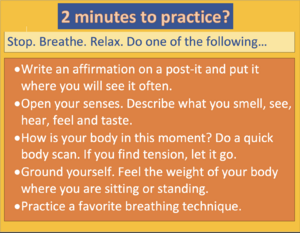So You Think You Might Need PRT
There are many resources available for people interested in Pain Reprocessing Therapy.
The best starting point is the new book, The Way Out: A Revolutionary, Scientifically Proven Approach to Healing Chronic Pain, by Alan Gordon, LCSW with Alon Ziv. It is only $14, and, as of November 1, 2021, it is #3 among Pain Management books on Amazon.com.
In terms of free resources, there is also Alan's free podcast, Tell Me About Your Pain, also with Alon Ziv and cosponsored by Curable. Over time, we aim to add more free resources to this website and to our companion website, prtrecovery.org.
If you find that you need more than the free and low-cost alternatives that are available, you can also consult the practitioner directories at the PRT Wiki, the PRT Center (which trains PRT practitioners), the TMS Wiki (our sister-site), or the PPD Association (a nonprofit focusing on a broader range of mind-body related to PRT). You may also contact the Pain Psychology Center, founded by the inventor of PRT, but there is a waiting list.
Some factors to consider
Some things to consider when deciding whether or nor not you have neuroplastic pain:
- Your pain has lasted longer than 8 weeks. Your body typically takes about 6 weeks to heal tissue damage. If it has lasted longer than this, something else is likely the cause.
- Your pain changes in intensity. Structural or tissue damage doesn’t change in intensity.
- You hurt at specific times of day or your pain comes and goes. Structural pain is constant.
- Your pain goes away on weekends and during vacations but gets worse on Sunday nights or after a tough day at work.
- Your pain flares when you are angry, sad or anxious.
- You have IBS, headaches or acid reflux. These often occur with brain generated pain.
- Your pain moves or spreads.
- Your scans and x-rays look normal for a person your age and activity level.
- Conventional treatments don’t seem to help you.
Find Connections Between Life Events and the Onset of Neuroplastic Pain: Creating a Timeline
One technique that can be used to determine if you have Neuroplastic Pain is to create two parallel timelines. The first is a timeline of neuroplastic symptoms and the second is a timeline of life events. Neuroplastic symptoms can begin in childhood and adolescence and can include headaches, stomach aches, dizziness, depression and anxiety. In addition to chronic pain, other neuroplastic symptoms to consider including are heartburn, IBS, numbness, multiple chemical sensitivities, unexplained rashes, eating disorders, insomnia, heart palpitations, tinnitus, etc. Life events to consider include births, deaths, marriage, divorce, traumatic experiences, retirement, employment, relocation, or any other major life change. After you create the timelines, line them up and see if there is any correspondence between the life events on one timeline and the neuroplastic events on the other. If there is a correlation, this may be a sign that it is neuroplastic pain. If you want to take the exercise a step further, you can identify the emotions you were feeling at the time the symptom started.
Example:
Fall 1996: onset of extreme neck and ear pain
Fall 1996: 10 year-old daughter diagnosed with autoimmune disorder/too ill to attend school/begin homeschooling. Emotion=overwhelmed, worried, lonely
Gathering the Evidence Graphic Organizer
“The more evidence you have that there’s nothing wrong with your body, the easier it is to believe that your brain is the culprit.” -Alan Gordon
Create an evidence sheet and record anything that convinces you that your pain is neuroplastic. You can use the graphic organizer like the below to get started or create your own.
| Exception: Pain behaved differently than usual. | Pain has an unusual pattern (one side of the body, mirror image on both sides) | Pain moved and or spread. | Pain changed based on time of day, location, or activity. |
Additional evidence could include having multiple diagnoses, experiencing increased pain during stressful situations, having pain is in an area of an old injury that already healed, having pain that is triggered by sounds, light, computer screens, foods, temperature, smells or weather changes.
